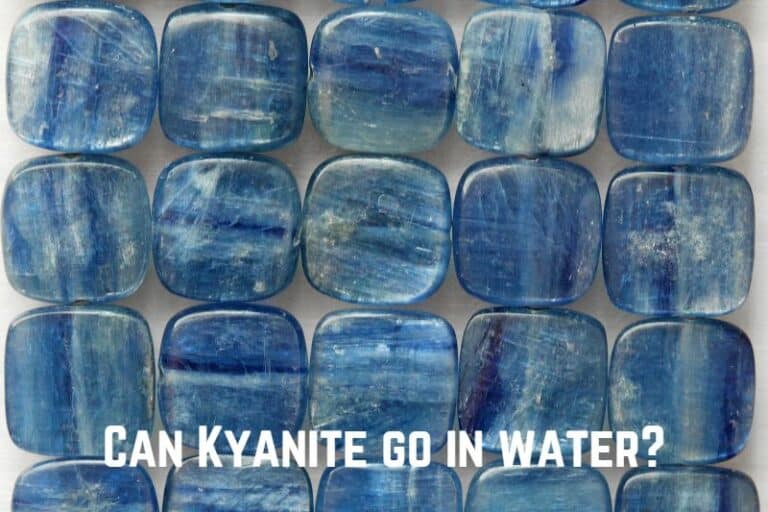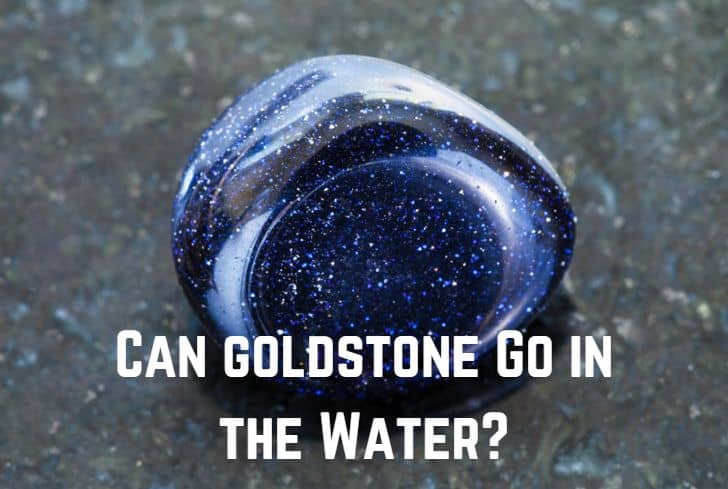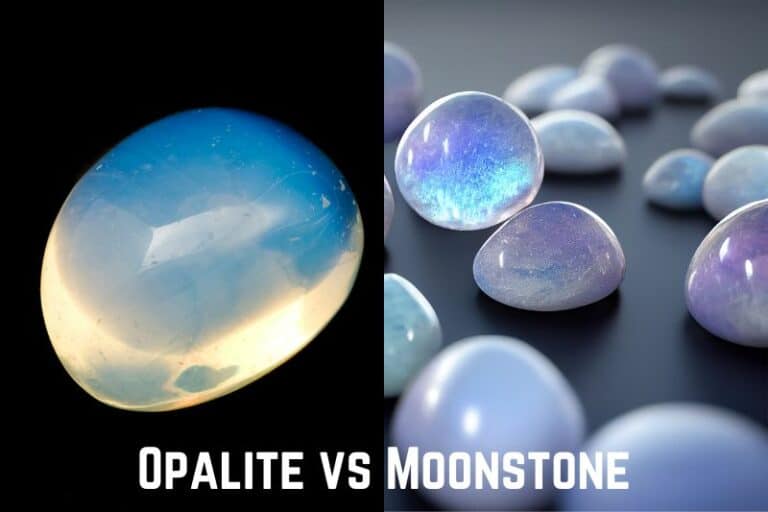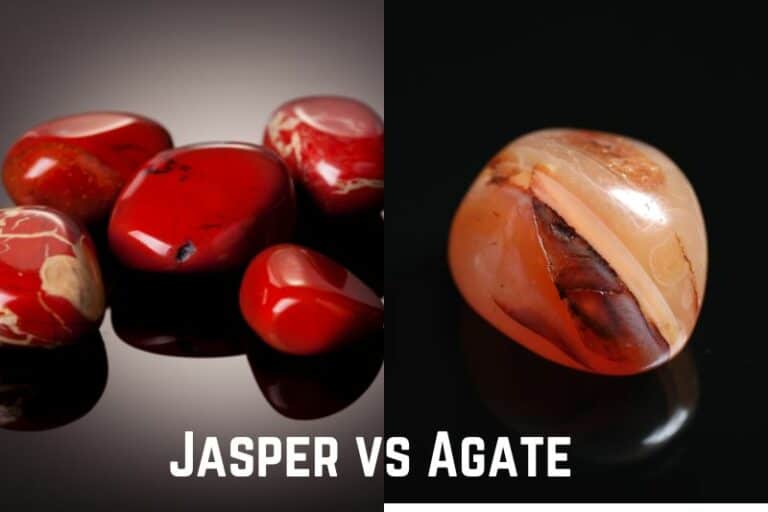Can Smoky Quartz go in the Water? (And in the Sun?)
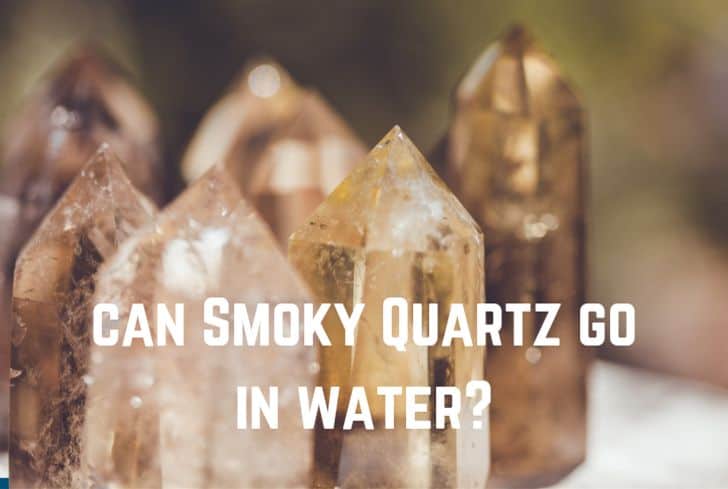
Smoky Quartz is a brownish variety of Quartz, made up of silicon dioxide (SiO4). The crystals range from almost completely transparent to opaque brown/black crystals. Smoky Quartz is a relatively inexpensive gem because it is abundantly available, and Brazil is the main source of the crystal.
Have you ever wondered if Smoky Quartz can go in the water? In this article, we are going to discuss just that. We will begin by looking at the properties of Smoky Quartz. Then we will talk about its interaction with various elements like water, sun, moon water, etc. Finally, we will learn how to clean and take care of smoky Quartz.
Read: Can Selenite go in Salt
Can Smoky Quartz go in the Water?
Yes, smoky quartz can go in the water. It has a value of 7.0 on the Mohs Hardness Scale, which is well above the minimum value required for minerals to be safe underwater. However, like all crystals, they should not be immersed for too long. Water can damage the structure and dull the appearance of the stone.
Mohs Hardness Scale is a relative measure of a mineral’s resistance to scratching. Besides that, it also indicates the stone’s relationship with water. Usually, a value over 5.0 means that the mineral is safe to go in the water.
Soft stones like selenite (value of 2.0 on the Mohs Scale) cannot go in the water. Smoky quartz is much harder, so it is safe to go underwater, but it should still not be immersed for long. Water enters the crevices of the stones and widens their cracks. These fissures may not be visible at first but can slowly damage the structure of the stone, making them brittle.
Water can also tarnish the appearance of the stone. It strips off the polish from the surfaces, making the stones look a lot duller. Fissures, encouraged by water, can also change the way light bounces inside the stone. So, the optical properties of the crystal can also be damaged by water, which can significantly reduce its beauty and value.
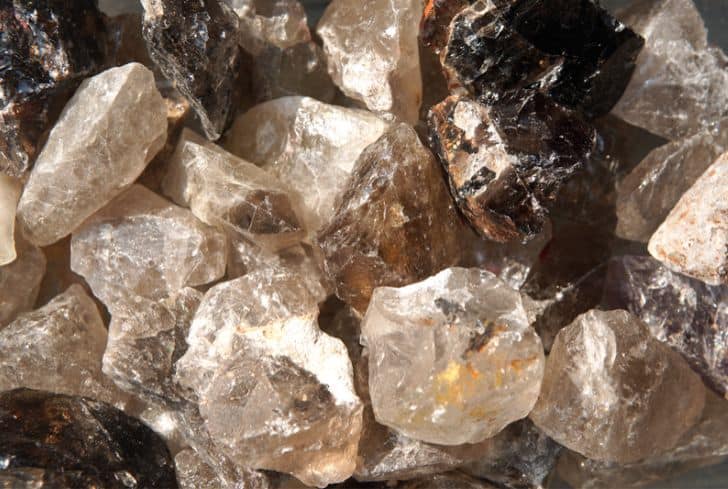
What are the Properties of Smoky Quartz?
These are the properties of Smoky Quartz.
- Color: The color of Smoky Quartz ranges from light yellowish brown to orangish/reddish brown to an almost blackish brown. Many crystal specimens are also grey. When cut into gems, crystals with orangish/reddish brown color are mostly preferred by people. Smoky Quartz with dark brown colour is often used in men’s rings and cufflinks. During the Victorian period, these were used as mourning jewelry.
- Structure: Smoky Quartz has a trigonal crystal system. It does not have cleavage and breaks with a conchoidal fracture. The crystals exhibit a vitreous lustre, and in terms of diaphaneity, they can range from transparent to almost opaque. Smoky Quartz is usually found as well-formed crystals in quartz veins and pegmatite dikes.
- Hardness: Like all varieties of Quartz, Smoky Quartz has a value of 7.0 on the Mohs Hardness Scale. This means that the stone is moderately hard and can go in the water. Because of its hardness, smoky quartz is a popular choice in jewelry. It is cut into beads and cabochons. It is also used in pendants, necklaces, and earrings. It is also a great gem to practice faceting since its price is low and it is available in large sizes.
- Composition: Smoky Quartz is a kind of Quartz, which is made up of silica or silicon dioxide (SiO4). The color of Quartz comes from the surrounding rocks, whose radiation activates color centres around aluminum impurities within the crystal. Amethyst also forms similarly, except that its color centres are formed around iron impurities.
- Occurrence: Smoky quartz is found in quartz veins and pegmatite dikes cutting across igneous and metamorphic rocks. At lower temperatures, it is also sometimes found in sedimentary and metamorphic rocks without any igneous association. Dark smoky quartz is usually found in radioactive mineral deposits, whose emissions are responsible for the dark color of the crystal.
Besides these physical properties, smoky quartz is also believed to have various spiritual properties. It is said to support the root chakra and helps fight depression by bringing emotional calm to the spirit and soul.
Check out this video by “CrystalConcentrics” to see the beautiful range of colors in which smoky quartz is available.
Can Smoky Quartz go in the Sun?
No, smoky quartz should not go in the sun. Putting stones out in the sunlight is a common way of recharging them, but it is not appropriate for all crystals. Smoky quartz is sensitive to the UV rays of the sun, and when it is exposed to sunlight, the brown/grey color can fade away.
How long it will take for sunlight to damage smoky quartz depends on the specimen you have. Some crystals may be fine under sunlight for a few hours, others might start to get damaged in a short while—in either case, you will only find out when it’s too late.
So, it is better to keep smoky quartz away from the sun altogether. Even if you are going out with jewelry, try to avoid wearing it when it’s extremely sunny. If you cannot do that, at least avoid wearing quartz jewelry during sunbathing.
There are plenty of other ways of recharging smoky quartz, such as keeping it in moonlight, or putting in brown rice, etc. So, you should consider those methods instead of sunlight.
Read: Can Rose Quartz Go in the Water
Can Smoky Quartz go in Salt Water?
No, smoky quartz should not be put into salt water. Smoky quartz has a value of 7.0 on the Mohs Hardness Scale meaning that it can survive underwater. However, even then, it should not be immersed for too long as water can be damaging. When we bring salt into the mix, it only worsens the corrosive process.
When dissolved in water, salt can seep into the crevices of the stone. Salt particles remain there even after the water evaporates, and they widen the cracks. These fissures can slowly damage the structure of the stone.
Salt water also tarnishes the appearance of the stone by stripping off the polish. Finally, salt can also react adversely with the elements of the mineral, and this is especially true for minerals having iron. Saltwater hastens the process of rusting by making the metal lose its electrons more easily.
Can Smoky Quartz go in Moon Water?
Yes, smoky quartz can go in moon water. Putting crystals in moon water (water that has been charged by the light of the moon) is a popular method of recharging them, and it is perfectly safe for smoky quartz. However, like all crystals, it should not be immersed in water for long.
To prepare moon water, you just need to fill a bowl with water and leave it in an outdoor setting for one whole night. It’s best to pick a spot that gets direct moonlight, and people usually do this during a full moon. The water is said to attract the vibrations of the moon and get charged with it.
You can immerse the stone in moon water and it will absorb the energies of the moon. However, you must ensure that you do not leave the stone in the moon’s water for long. Even though smoky quartz is safe in water (having a value of 7.0 on the Mohs Scale), it should not be immersed for long.
Water can damage the structure of the stone and tarnish its appearance. So, make sure you leave the smoky quartz in moon water only for a short while. You can also try directly recharging the stone under the moonlight. Simply place it on a windowsill that gets moonlight and leave it overnight.
Read: Can Hematite Go in the Water
How do You Clean Smoky Quartz?
Smoky Quartz has a value of 7.0 on the Mohs Hardness Scale, meaning that it can go underwater. So, we will clean it accordingly with a mix of water and soap. Follow these steps to clean smoky quartz:
- Mix a soft detergent/soap with lukewarm water.
- Immerse the stone in the solution for a few minutes and clean the crevices with a soft brush.
- Rinse it under running water to get rid of all soap.
- Let it air dry, ensuring that you twist it a few times to remove all remaining water.
Avoid using ultrasonic cleaners or steaming methods for quartz as they can damage the stone. Smoky Quartz should also not be put out in the sun, because it can cause the color of the crystal to fade.
For cleansing, you can leave the stone in the moonlight, put it in brown rice, or smudge it with sage.
Conclusion
In this article, we have talked about the relationship of smoky quartz with water. With a value of 7.0 on the Mohs Hardness Scale, smoky quartz is a moderately hard mineral and is safe in the water. However, like all crystals, they should not be immersed for too long. We looked at the stone’s interaction with salt, sunlight, and moon water. We finally talked about cleaning smoky quartz.


